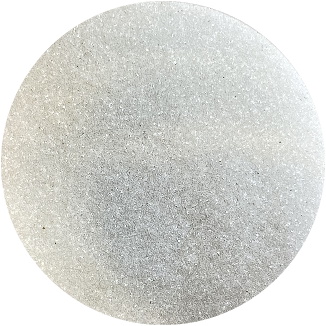ABRASIVES FOR SANDBLASTING
The choice of abrasives for blasting adapted to the different applications is essential, this choice may seem difficult among the many products available, these few indications will allow you to select the appropriate abrasives for sandblasting.
- The choice of abrasive must be made taking care to consider all the influential parameters, to ensure optimal performance.
- We are at your disposal to advise you on your application, and possibly carry out tests on your parts in our workshops.
- You can order your abrasives directly online from our shop

ABRASIVES FOR SANDBLASTING ARE AVAILABLE IN 3 PRODUCT FAMILIES:
1. ANGULAR ABRASIVES (SANDBLASTING SAND / CORUNDUM / METAL SHOT...)
- For stripping, deoxidizing, etching or deburring
- To create a roughness,
- They tear material from the surface of the room,
- To be avoided on precision mechanical parts (modification of dimensions)
2. SPHERICAL ABRASIVES (GLASS, CERAMIC OR METAL BALLS)
- To clean, renovate or satin finish metal,
- To perform shot-peening
- To finish welds (stainless steel, aluminum, etc.)
- They pound the surface of the room.
3. MILD ABRASIVES (PLASTIC, VEGETABLE OR BICARBONATE MEDIA)
- To clean or strip without damaging the substrate,
- To process delicate parts
- Since sodium bicarbonate is soluble in water, it makes cleaning parts easier
SOME BASIC RULES ON THE USE OF ABRASIVES FOR SANDBLASTING:

- The impact force of each abrasive grain on the workpiece is proportional to its size (particle size), and to the compressed air pressure
- The nozzle-part distance also varies the impact power,
- The stronger the abrasive, the more it accepts high air pressure, and therefore powerful impacts.
- A resistant abrasive can be recycled several times before being disposed of by the machine as dust, conversely, a less resistant abrasive will be consumed more quickly.
- With a constant abrasive flow at the nozzle outlet, more fine grains will come out and generate more impacts than larger grains.
- The roughness obtained by angular abrasive projection is related to the grain size of the abrasive, as if the shape of the grain were copied onto the workpiece.
- It is easier to create roughness on a soft metal than on a hard metal.
- The harder and brittle the surface layer to be removed, the easier it is to remove, conversely, the abrasive will tend to bounce off a soft material such as rubber or glue.
- 2 successive treatments with 2 different abrasives are sometimes necessary, the first to strip and the second to produce a satin finish.
- Glass microbeads, projected at too high an air pressure, burst on impact and turn into angular grains, which gradually changes the final surface finish, it is necessary to limit the impact energy to avoid this phenomenon, or replace the abrasive more often.*
FOR MORE INFORMATION : CONTACT US